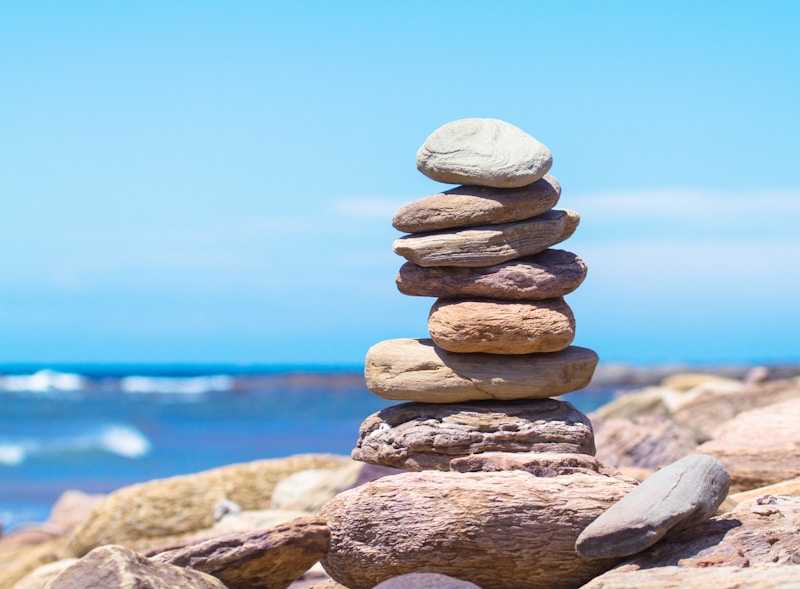The subject of yoga is like Doctor Who’s tardis. Despite its apparent simplicity, yoga, once opened up seems to be as vast as the universe itself. Take, for example, the path of yoga. It’s the eight-limbed path, right? Well yes, but, no, wrong. There are actually three other yogic paths, that are also routes to the same end.
These four ‘routes’ all lead to the ultimate goal of Moksha, or liberation. They are; the path of action, the path of devotion, the ‘royal’ path of yoga (or the eight-limbed path), and the path of philosophy or knowledge. They are called, Karma Yoga, Bhakti Yoga, Rajah Yoga, and Jnana Yoga.
The yoga that most of us think of us ‘yoga’ is Rajah Yoga. But we’re going to focus on the first of these paths, Karma Yoga.
Why are there four paths?
Just as all of us have our unique strengths and natures, there are different ways to find the path to bliss. For the intellectually-centered, Jnana Yoga, the path of philosophy is the route to take. For those that are heart-centred, they will be drawn to the devotional aspects of Bhakti Yoga. And the doers amongst us will find their route to self-realisation through selfless actions – Karma Yoga.
However, while some natures are better suited to one path or the other, they are not separate or non-interchangeable, and most of us can walk all these paths at different points in our lives.
What is Karma Yoga?
We already know the term ‘yoga’, and most of us are familiar with ‘karma’ too. Karma is the sum of our actions, built up over our lifetimes (and previous lifetimes too if you believe in reincarnation). If your actions are for the good of others, then you’ll accrue good karma, and if your intentions are greedy, lazy or selfish, then equally you’ll build up bad karma. Karma Yoga is about learning to act with completely pure intentions, without any motivation of reward or recognition.
The Bhagavad Gita also gives an explanation of the term Karma Yoga:
Work alone is your privilege, never the fruits thereof. Never let the fruits of action be your motive, and never cease to work. Work in the name of the Lord, abandoning selfish desires. Be not affected by success or failure. This equipoise is called Yoga.’
How do we do Karma Yoga?
Karma yoga is the active pursuit of good actions without thought for oneself. As Mahatma Gandhi said, “The best way to find yourself is to lose yourself in the service of others.” This doesn’t mean just be really busy. Most of us are pretty good at being busy already, without any further encouragement. It also doesn’t mean just being a doormat, rushing around and looking after everyone else.
It can be as simple as volunteering for a local charity and giving your time without any thoughts about how great it will make you feel or how good it’ll look on your CV. In the small, but perfectly formed book, Yoga, the author, Ernest Wood, explains:
When the actions of daily life are permeated by the buddhic devotion to life, those actions become yoga, karma-yoga. Every action can thus be yoga. Washing dishes with love is yoga. The actions going on in a dishwasher are not.
Here when he says ‘buddhic’, this doesn’t relate to the religion of Buddhism, but to the Buddhi, which is our intelligence centre.
Karma Yoga and Dharma
There is also an element of dharma, or duty, to Karma Yoga. Doing one’s duty, as our dear old Queen would say, is pretty unfashionable these days. Being dutiful is seen as being passive and dull. But having a sense of duty, or knowing one’s duty, can be part of acting in a Karma Yoga way.
The idea of duty as set out by Krishna in the Bhagavad Gita is that all beings are dependent on each other, and therefore, it is your duty to use your natural talents and abilities, as well as your position in the world (such as a position of power or responsibility) for the welfare of everyone around you.
In other words, it is your duty to be as wonderfully you as it is possible to be, not to show how wonderful you are, but because it will benefit the world.
Karma Yoga and Yoga
In Yoga, Ernest Wood writes that it is the duty of the yoga teacher, not only to teach yoga but to encourage their students to do ‘right actions’. This means not acting out of a desire for bodily pleasure or self-satisfaction, but acting with a sense of sacrifice, so that there is no personal attachment to actions.
How can we do this ourselves as teachers and students of yoga? We can spend a little more time on self-examination. How do we know whether our actions come from the ego, or from a place of intelligent sacrifice? We have to use our ‘buddhi’ – the intelligence centre mentioned above.
In the end, the purpose of Karma Yoga is not to label each action, ‘good’ or ‘bad’. It is that it gently encourages us to use the deep-seated wisdom that is already present inside all of us. To use this wisdom to move away from habitual actions and to really live our lives in as present a way as possible. As Ernest says:
Joy goes with the whiteness of the karma-yoga, because there is more life in it.













